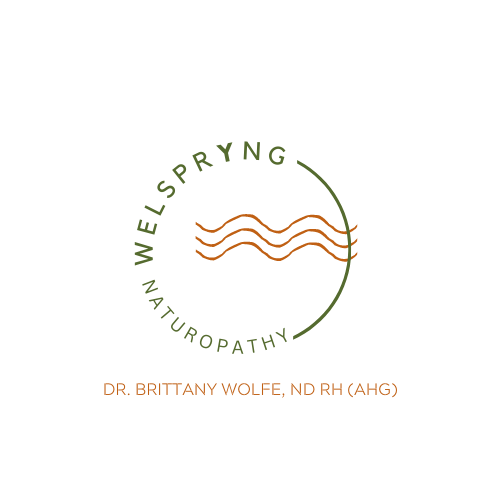weeds as medicine
One of the things I that I miss the most about living in British Columbia is the pedestrian lifestyle; being able to walk most places that you need to go is a reminder to be grateful for the ability to move with ease, a great way to ground yourself in nature and perhaps the lesser known reason that I love to walk places: The herbs. In my time living in New Westminster, I walked to and from the school and the teaching clinic hundreds of times. Each time, I would observe the St. John’s Wort busting through the chainlink fence exuding its beautiful yellow blooms or the plantain growing through the cracks in the sidewalk and, of course, the unmistakable leaves of dandelion; a sure way to know that Spring is right around the corner. However, in order for me to reap the joy and benefit of being surrounded by these herbs that pack a medicinal punch, I first had to be introduced to them.
My introduction to the magic of herbs is a blended result of academia, hands-in-the-dirt-practicum and willingness. One particular talk by Dr. Lee Brown from the wolf clan of the Cherokee Nation made a large impact on my approach to health, herbs and nature. One of the many things I learnt that day was that when elders of his community were called upon to heal somebody, they would first walk around their property. They were looking for the herbs that were growing wildly throughout their yard; not planted and cultivated but sprouting through the earth on their own will. This was their first indication of what ailment this person may be suffering with; they knew that the plants will always find you, especially when you need them the most.
This story changed my daily walks. I became aware of what was around me, I identified it and I studied its medicine. I pondered why plantain, a plant widely used for its demulcent or soothing properties was popping up on every street corner or why St. John’s Wort, a sunny plant used to lighten the mood was gladly thriving in the city. Maybe it was coincidence or maybe it was a solution to the disconnection and pain that is often too abundant in our society today. Whether or not the herbs growing freely around your space are indicated in your healthcare can be decided upon with your naturopathic doctor. But I encourage you to be mindful of what is growing near you, look into its medicinal properties and, perhaps, you might find just the medicine you need right in your own front yard.
MEET YOUR MEDICINE
PLANTAIN
Plantago major
Once you become familiar with plantain, you will see it nearly everywhere; it grows freely in cities, country sides, riverbanks, gardens and everywhere in between. It is an herb known to be soothing both externally and internally for the lungs and digestive tract. There are two main species of plantain that you may see around but I have found that P. major is more common in Regina. Read on below to figure out what the difference is and how to use this herb to soothe those summertime bug bites!
Botanical Description
Perenial herb
Leaves grow low to the ground and the stem ranges from 10-30 cm in length
Leaves have parallel veins
P. major has rounded-oval leaves
P. lanceolata has lancet-shaped or narrow leaves
The flowers are small and green in colour
Suggested use
It is generally accepted that P. major is more useful for external ailments like skin irritation while P. lanceolata is more indicated for internal ailments.
The leaves are most commonly used for either purpose
It is also used externally to soothe skin as a salve or oil or, if you’re in the wilderness, as a spit poultice!
Plantain Spit Poultice
Harvest the leaves of P. major (ideally!), roll them up into a little ball and place in your mouth to chew
The enzymes found in our saliva help to activate the healing properties of the leaf
Once you have created a green little bolus, you can cover an irritated mosquito bite or bug bite with the mixture and leave it on there until the irritation is relieved
If a spit poultice is not for you, you can also use a mortar and pestle to grind it up
Other Tips and tricks
A spit poultice can also be used to pull venom out of snake bites; perhaps not all that useful in Saskatchewan but it is certainly an ally you want to be aware of anytime you are in the wilderness
DISCLAIMER:
I do not recommend touching, eating or preparing any herbs for medicinal purposes if you cannot confirm that they have not been sprayed with pesticide or if you unsure of the quality of the soil.
If you have allergies to any of the following, it is not recommended that you use them in any preparation. If you are unsure of your allergies, always do a spot test first before proceeding with a larger sample.
You should always speak to your naturopathic doctor before adding a new herb to your healthcare regime. Although they have reputation for being gentle healers, they are still very powerful.
And, perhaps most important, please be mindful of where you are wildcrafting and always acknowledge that harvesting is a gift from Mother Nature. Take only what you need and be grateful.
Resources:
Gray, Beverley. The Boreal Herbal: Wild Food and Medicine Plants of the North. (2011). Yukon: Aroma Borealis Press.
Kesling, O. (n.d.). Plantain Monograph. Retrieved June 30, 2020, from https://www.herbrally.com/monographs/plantain
Marcinao, Marisa and Vizniak, Nikita. (2018). Botanical medicine. Vancouver: Professional Health Systems.

